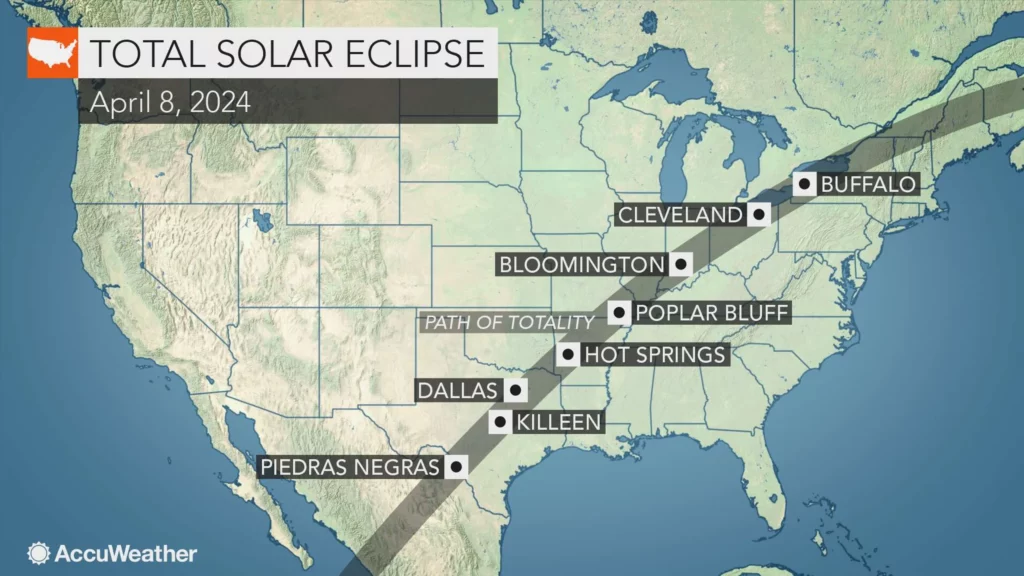
On April 8, the skies will darken as North America witnesses a total solar eclipse. While such celestial events often captivate millions, scientists are sounding the alarm on an unexpected danger: a potential increase in fatal car crashes. This warning comes in the wake of new research that links the last eclipse that occurred in 2017 with a notable rise in traffic fatalities.
During the previous eclipse, there was about one extra person involved in a vehicle crash every 25 minutes, and one extra crash fatality every 95 minutes. There’s no good reason to believe we won’t see a similar uptick this time as well.
Danger data
While most people in the path of the upcoming solar eclipse are rightfully careful with eye safety, researchers in Canada would like to bring our attention to the unusually heavy (and dangerous) traffic during this event. The problem isn’t the sudden shift from daytime to dark. During the brief couple of minutes that the eclipse unfolds, most vehicles are stationary as people step out to enjoy the show. It’s during the hours immediately before when people are rushing to the site of observation and the hours after when they hurry to get back home that these tragic accidents can happen.
The researchers led by Dr. Donald Redelmeier, a professor of medicine at the University of Toronto and physician at the Sunnybrook Health Sciences Centre, scoured data from the National Highway Traffic Safety Administration’s Fatality Analysis Reporting System. This dataset records all fatal traffic crashes on public roads in the U.S. They focused on a three-day window around the August 21, 2017 eclipse and compared the numbers to crash data from three-day windows a week before and a week after the eclipse.
The total solar eclipse on August 21, 2017, created a path of totality about 70 miles wide. Remarkably, this path was within a 300-mile drive for one-third of all U.S. residents. The researchers found that an estimated 20 million Americans traveled to different cities to witness the eclipse, significantly increasing road traffic.
Redelmeier and his team utilized an official U.S. Navy calculator to determine the timing of crashes relative to the peak moment of the eclipse, based on the latitude and longitude of each incident. During the three days surrounding the eclipse, 741 people were involved in fatal crashes, compared to 1,137 during the six control days.
A surprising risk beyond sunburned retinas
Redelmeier noted that on eclipse days, the average was just over 10 traffic-related deaths per hour, compared to the usual average of slightly less than eight deaths per hour. This marks a 31 percent increase in traffic risk around the eclipse time. That’s on par with crash spikes on the 4th of July or Christmas. The researchers didn’t have data at their disposal concerning non-fatal car crashes, but it’s only reasonable to assume you can expect an uptick in minor accidents too.
The researchers pointed out that it’s challenging to blame the increased traffic risks on the brief changes in lighting conditions. Instead, the significant uptick in traffic volume is likely the main cause. They also highlighted other potential contributing factors, such as traveling on unfamiliar roads, speeding to reach destinations on time, distractions caused by the rare celestial event, impairment due to drugs or alcohol from eclipse celebrations, and unsafe roadside eclipse viewing practices.
Most accidents happened within a two- to four-hour drive from the path of totality. The researchers emphasized that the greatest danger occurs not when the journey begins but two to four hours into the drive.
Driving Safely in the Eclipse’s Shadow


Looking ahead, the path of totality for the upcoming total eclipse on April 8 — expected to last 3-4 minutes — will probably involve even more people. Many people heard how awesome the 2017 eclipse was and you can bet they won’t want to miss this one. Expect traffic jams lasting over a dozen hours in the biggest hot spots, so exercise caution.
In light of these findings, the study’s authors stress the importance of adhering to basic road safety practices. Recommendations include adhering to speed limits, minimizing distractions, using signals for turns and lane changes, never driving while impaired, and wearing seat belts. In other words, the same basic rules we all need to follow on any day at the wheel — this time, even more so.
The new findings appeared in the journal JAMA Internal Medicine.
Thanks for your feedback!
